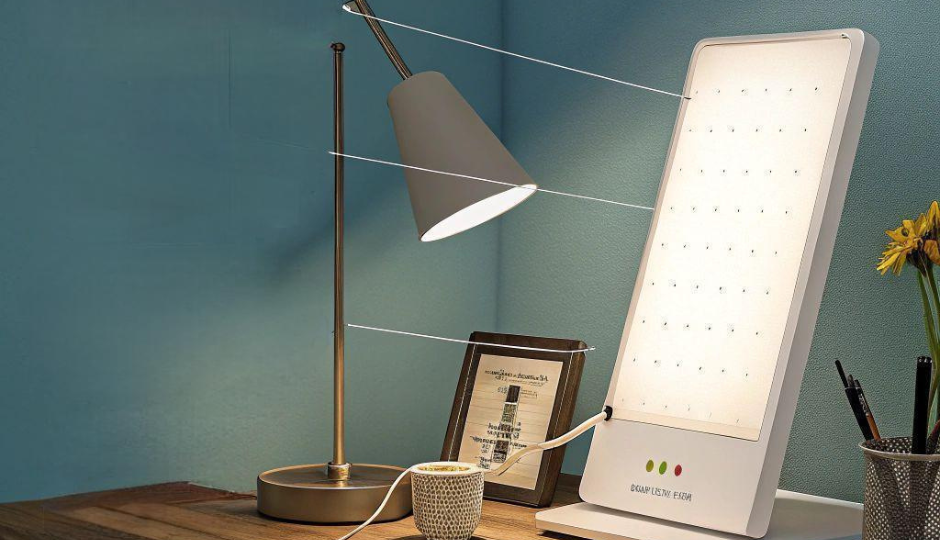The soft white glow of a SAD therapy lamp may seem simple, but behind it lies a system that must perform perfectly every time—or the results could fall short.
SAD therapy lamps require stable, flicker-free power output to ensure therapeutic effectiveness. A reliable power supply is crucial for both safety and performance, especially for users who rely on light therapy daily.
When we think about health tech, we usually picture wearables, smart monitors, or wellness apps. Rarely do we think about what makes them work reliably in the background. SAD lamps are a good example. Most people never ask what powers them until something goes wrong. But from a product designer’s perspective, that power system isn’t just a technical piece. It affects safety, compliance, performance, and even brand reputation.
Why Does a Power Supply Matter So Much in Light Therapy Devices?
The results of light therapy depend on one thing: consistency. A therapy lamp that flickers, buzzes, or overheats will never deliver effective results and can damage trust in your product.
SAD therapy lamps must deliver high-lux light, typically 10,000 lux, without flicker or noise. That kind of performance relies on power adapters that output consistent voltage and current throughout use.
Most light therapy users place their lamp beside their desk or bed. The goal is to restore energy, not cause headaches or eye strain. Power instability introduces flicker. That flicker, even if invisible to the eye, can cause discomfort or defeat the purpose of the lamp. Engineers know that a power adapter that isn’t well-regulated will create those problems.
The power adapter must also avoid audible noise. Buzzing from poor insulation or electromagnetic interference is common with low-quality supplies. This kind of noise is especially noticeable in quiet environments, which is exactly where therapy lamps are used. If a product like a SAD lamp hums, users will turn it off—or worse, leave a bad review.
For safety, overheating is another concern. Therapy sessions often last 30 to 60 minutes daily. A high-efficiency power adapter generates less heat, protects components, and avoids risk to the user. This is especially critical when the product is marketed for health and wellness.

How Does Power Design Affect Product Certification?
When we design a product that impacts human health—even indirectly—we enter a different level of responsibility. SAD lamps must meet standards like CE, UL, or IEC 60601. If the power adapter doesn’t comply, the entire product may fail certification.
The power adapter is often the component most involved in passing safety and compliance testing, particularly for global markets.
In my past projects, I’ve seen time and again how non-compliant power supplies cause delays. Certification labs will reject samples based on minor power-related failures—excessive leakage current, no surge protection, or improper labeling. Fixing these issues later costs more than getting it right at the start.
If your therapy lamp is going to international markets, your power supply must handle voltage ranges from 100V to 240V. It must also be tested for energy efficiency, which is increasingly required in North America and Europe. That means you’re balancing safety, performance, and sustainability before you even ship a unit.
One key lesson I’ve learned is this: when a team treats the power adapter as an afterthought, they pay for it in certification costs, launch delays, or product recalls.
What Challenges Do Power Supplies Solve in SAD Lamp Development?
Fast development cycles, tight cost control, and competitive features often push teams to focus only on core components. But neglecting power architecture can cause bigger issues later.
Power adapters in SAD lamps help solve noise, safety, efficiency, and long-term durability issues, many of which affect brand trust and user retention.
In my experience, one of the biggest product killers in wellness electronics is electrical noise, both audible and electromagnetic. When a device makes unexpected sounds or interferes with nearby electronics, users notice. They associate it with poor quality. It affects how the product feels, not just how it works.
Another challenge is temperature. Thermal buildup inside the power adapter or near the LED light can shorten the lifespan. A high-efficiency adapter with good thermal management protects the entire lamp assembly.
Then there’s the issue of long-term support. Many consumer electronics have life cycles as short as 12 months. That puts pressure on the supply chain. If your adapter model is discontinued or hard to source, it disrupts production. That’s why working with reliable power partners is key—not just for the current batch, but for future models too.
I’ve worked on projects where 80% of technical support calls were traced back to power supply problems. Most could have been avoided with more careful selection and testing upfront.
Conclusion
SAD therapy lamps may seem simple, but they rely on stable, certified, and well-engineered power to deliver real value to users.




